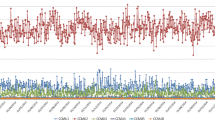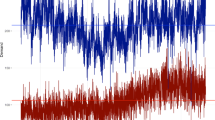Abstract
The daily influx of patients at emergency departments (EDs) is highly unpredictable and a major cause of overcrowding in hospitals. This study aims to provide decision-making support and establish a shared situational awareness among medical and administrative personnel. By accurately forecasting daily attendance, this project attempts to effectively reduce overcrowding issues and improve overall patient care. To address this issue, this study focuses on studying different models to predict the number of visits to the emergency departments and investigating the factors affecting daily demand. Hospitals can benefit from accurately forecasting the number of patients arriving at the ED, allowing for early planning and mitigating overcrowding. As the subject of the study, a real database collected from Asunción Klinika from 2004 to 2022 was examined in Tolosa, Gipuzkoa. For this purpose, models such as ARIMA, LSTM and GRU are proposed. The study revealed that weekly patterns as well as calendar and meteorological information have an impact on the volume of daily patient arrivals. Over the years, several forecasting models using time series analysis have been proposed to address this challenge. Results showed that hybrid models outperformed the others in terms of the Mean Absolute Error metric (MAE). Predictions have yielded an average daily error of 5.2 individuals, which accounts for 13\(\%\).
Access this chapter
Tax calculation will be finalised at checkout
Purchases are for personal use only
Similar content being viewed by others
References
Zhang, Y., Zhang, J., Tao, M., Shu, J., Zhu, D.: Forecasting patient arrivals at emergency department using calendar and meteorological information. Appl. Intell. 52(10), 11232–11243 (2022). https://doi.org/10.1007/s10489-021-03085-9
Sudarshan, V.K., Brabrand, M., Range, T.M., Wiil, U.K.: Performance evaluation of emergency department patient arrivals forecasting models by including meteorological and calendar information: a comparative study. Comput. Biol. Med. 135, 104541 (2021). https://doi.org/10.1016/j.compbiomed.2021.104541
Wargon, M., Guidet, B., Hoang, T.D., Hejblum, G.: A systematic review of models for forecasting the number of emergency department visits. Emerg. Med. J. 26(6), 395–399 (2009). https://doi.org/10.1136/emj.2008.062380
Harrou, F., Kadri, F., Sun, Y., Khadraoui, S.: Monitoring patient flow in a hospital emergency department: ARMA-based nonparametric GLRT scheme. Health Informatics J. 27(2), 14604582211021649 (2021). https://doi.org/10.1177/14604582211021649
Choudhury, A., Urena, E.: Forecasting hourly emergency department arrival using time series analysis. Br. J. Health Care Manag. 26(1), 34–43 (2020). https://doi.org/10.12968/bjhc.2019.0067
Jones, S.S., Thomas, A., Evans, R.S., Welch, S.J., Haug, P.J., Snow, G.L.: Forecasting daily patient volumes in the emergency department. Acad. Emerg. Med. 15(2), 159–170 (2008). https://doi.org/10.1111/j.1553-2712.2007.00032.x
Kadri, F., Abdennbi, K.: RNN-based deep-learning approach to forecasting hospital system demands: application to an emergency department (2020)
Sharafat, A.R., Bayati, M.: PatientFlowNet: a deep learning approach to patient flow prediction in emergency departments. IEEE Access 9, 45552–45561 (2021). https://doi.org/10.1109/ACCESS.2021.3066164
Røislien, J., Søvik, S., Eken, T.: Seasonality in trauma admissions - are daylight and weather variables better predictors than general cyclic effects? PLoS One 13(2), e0192568 (2018). https://doi.org/10.1371/journal.pone.0192568
Peck, J.S., Benneyan, J.C., Nightingale, D.J., Gaehde, S.A.: Predicting emergency department inpatient admissions to improve same-day patient flow. Acad. Emerg. Med. 19(9), 1045–1054 (2012). https://doi.org/10.1111/j.1553-2712.2012.01435.x
Tandberg, D., Quails, F.C.: Time series forecasts of emergency department patient volume, length of stay
Carvalho-Silva, M., Monteiro, M.T.T., S’a-Soares, F., D’oria-N’obrega, S.: Assessment of forecasting models for patients arrival at emergency department. Oper. Res. Health Care 18, 112–118 (2018). https://doi.org/10.1016/j.orhc.2017.05.001
Whitt, W., Zhang, X.: Forecasting arrivals and occupancy levels in an emergency department. Oper. Res. Health Care 21, 1–18 (2019). https://doi.org/10.1016/j.orhc.2019.01.002
Yousefi, M., Yousefi, M., Fathi, M., Fogliatto, F.S.: Patient visit forecasting in an emergency department using a deep neural network approach. Kybernetes 49(9), 2335–2348 (2020). https://doi.org/10.1108/K-10-2018-0520
Helfenstein, U.: Box-jenkins modelling in medical research. Stat. Methods Med. Res. 5(1), 3–22 (1996). https://doi.org/10.1177/096228029600500102
Etu, E.E., et al.: A comparison of univariate and multivariate forecasting models predicting emergency department patient arrivals during the COVID-19 pandemic. Healthcare (Switzerland) 10(6), 1120 (2022). https://doi.org/10.3390/healthcare10061120
Duarte, D., Faerman, J.: Comparison of time series prediction of healthcare emergency department indicators with ARIMA and prophet. Acad. Ind. Res. Collab. Center (AIRCC) 123, 33 (2019). https://doi.org/10.5121/csit.2019.91810
Schmidt, R.M.: Recurrent Neural Networks (RNNs): A Gentle Introduction and Overview. http://arxiv.org/abs/1912.05911
Medsker, L., Jain, D.L.: RECURRENT NEURAL NETWORKS. B. Raton London New York Washington (2001). Edited by Design and Applications
Hochreiter, S., Schmidhuber, J.U.: Long short-term memory (Unknown)
Grosse, R.: Lecture 15: Exploding and Vanishing Gradients. https://commons.wikimedia.org/w/index.php?curid=321973
Chen, J., Jing, H., Chang, Y., Liu, Q.: Gated recurrent unit based recurrent neural network for remaining useful life prediction of nonlinear deterioration process. Reliab. Eng. Syst. Saf. 185, 372–382 (2019). https://doi.org/10.1016/j.ress.2019.01.006
Author information
Authors and Affiliations
Corresponding author
Editor information
Editors and Affiliations
Rights and permissions
Copyright information
© 2024 The Author(s), under exclusive license to Springer Nature Switzerland AG
About this paper
Cite this paper
Aguirre, S., Kerexeta, J., Espejo-Mambié, M.D. (2024). Time Series Models for Predicting the Number of Patients Attending the Emergency Department in a Local Hospital. In: Rojas, I., Ortuño, F., Rojas, F., Herrera, L.J., Valenzuela, O. (eds) Bioinformatics and Biomedical Engineering. IWBBIO 2024. Lecture Notes in Computer Science(), vol 14848. Springer, Cham. https://doi.org/10.1007/978-3-031-64629-4_27
Download citation
DOI: https://doi.org/10.1007/978-3-031-64629-4_27
Published:
Publisher Name: Springer, Cham
Print ISBN: 978-3-031-64628-7
Online ISBN: 978-3-031-64629-4
eBook Packages: Computer ScienceComputer Science (R0)




